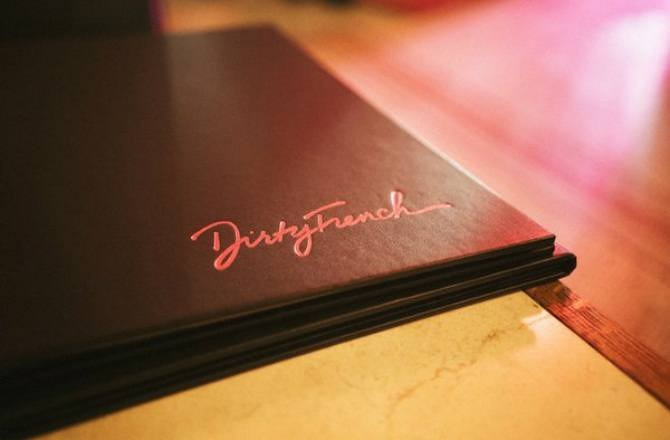Pete Wells Awards Two Stars To Dirty French
Pete Wells gave his readers a large dose of his signature playful snark this week in his review of Dirty French, the Lower East Side restaurant from chefs Rich Torrisi and Mario Carbone and their partner Jeff Zalaznick that opened in September. His good-natured ribbing echoed the restaurant's culinary and hospitality philosophies, which the critic reported he mostly enjoyed.
At the outset of the review, Wells sets the impish tone, calling out the restaurant's immodest signage, "A new restaurant... tiptoed onto the Lower East Side in September, demurely announcing its name with two eight-foot-high neon signs in peep-show pink." He then makes sure to mention the restaurant's expensive reservation policy, noting that reservations must be "secured with a credit card and a gentle warning of a modest $50-a-person cancellation fee." Wells continues his deadpan humor when describing the interior, poking a little fun at the room, which is "decorated with a few shoestring-budget items, like a wall-length antique carnival mirror shipped from France. A few weeks ago, the partners had the artist Rashid Johnson, a frequent guest, throw oozing slicks of wax blended with West African black soap against the mirror's glass. (Around the same time, one of Mr. Johnson's wax-and-soap works sold at auction for just under $200,000.)"
The reason for all this joshing from Wells is that he finds Dirty French to be "one cocky restaurant." This isn't necessarily a bad thing in this case, as he explains that "It can also be an immensely enjoyable one. That sounds contradictory, but the same self-confidence that can get on your nerves also allows this crew to mess around with French cuisine with a hugely energizing lack of respect." The restaurant critic enjoys this reimagining, and frames it as new global French cuisine, as "it's as if the chefs have imagined an alternative history in which the leading kitchens of France turned left instead of right several decades ago...what if, instead of teaching Americans to make puff pastry, the country's chefs had taken cooking lessons from the rest of the French-speaking world?"
He calls out a number of his favorite dishes, including "a flatbread inspired by the mahjeb Mr. Torrisi ate, one loaf after another, in a North African neighborhood of Paris," the "glorious" lamb carpaccio, the $72 poultry feast, and the mille-feuille, which he describes as a "technical showstopper...a disorienting dish [that] makes your head spin in a wonderful way." However, the kitchen didn't always walk the walk, so to speak, as in the case of the bouillabaisse: "Cuttlefish ink took the broth to the outer edge of intensity, but the medicinal taste of fresh marjoram in some spoonfuls went beyond it." And there were a few more missteps: "while duck heart kebabs unloaded at the table added brawn to a frisée and lardons salad, the blast of mustard in the dressing was an excessive use of force... Baked clams seemed perplexed by their thick jackets of almonds and Ethiopian spices, and so was I. A beautifully cooked trout meunière was speckled with sesame seeds and herbs, a mix that came across as an oddly neutered za'atar."
"Still," Wells maintains, "you can eat extraordinarily well by calling your shots and rolling with the loose, genial decadence of the place." At the very end of the piece, he expresses concern that Torrisi, Carbone, and Zalaznick are spreading themselves too thin in their quest to rule the New York restaurant scene, as they "plan to open three original restaurants next year while continuing to build new Parm locations. The question is whether this will leave them the energy to keep refining their mongrel bistro on Ludlow Street while rolling out its breakfast and lunch menus in the coming months. Dirty French needs time to grow into its ideas, and maybe to grow out of a few of them."
Kate Kolenda is the Restaurant and City Guide Editor at The Daily Meal. Follow her on Twitter @BeefWerky and @theconversant.
